Raiding and Warrin in Monastic Ireland
Published in Features, Gaelic Ireland, Issue 3 (Autumn 1993), Pre-Norman History, Vikings, Volume 1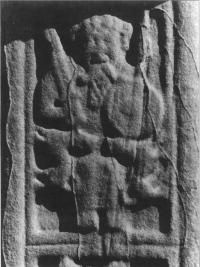
Plate 1: Seated chief bearing upright sword, circular shield and spear under the arm: south face of the high cross at Durrow, County Offaly. (COURTESY OF THE OFFICE OF PUBLIC
WORKS)
The historiography of Irish monasticism emphasises the glory and piety of this enlightened era, with its myriad of saints espousing high art and learning, and not only moulding this island but also making a resounding impact on Europe. Raiding and warring might seem anathema to this ostensibly spiritual world, but the numerous references to plundering and pillaging in the annals from the seventh century onwards suggest that episodic violence was endemic to monastic settlement. Furthermore, it is clear that monasteries were not simply the victims of external aggression as the propagandist annalists and more romantic antiquarians would have us believe. In 1962 in his definitive essay, The plundering and burning of churches in Ireland’, A.T. Lucas dispelled the notion that the Vikings alone were the despoilers of monasteries. He cited the fact that on the 309 occasions when ecclesiastical sites were plundered between the years 600 and 1163, the Irish were responsible for half of the attacks and in nineteen instances the Irish and Norse combined forces. Moreover, there is documentary evidence for inter-monastery wars, abbots taking up arms on behalf of provincial overlords and high kings, and for monastic enclaves being chosen as the stages for battles between warring dynasties. The ‘church militant’ is also visualised in the many representations of weaponry on Irish high crosses and in illuminated manuscripts of the ninth and tenth centuries produced by monastic workshops. Among the more striking of these images is the seated chief bearing an upright sword, circular shield and spear under the arm on the south face of the cross at Durrow, County Offaly (Plate 1); the rude figure of a swordwielding warrior on the south face of the
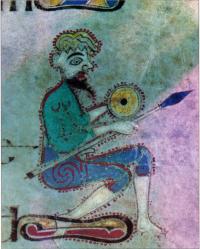
Plate 2:Bearded Warrior bearing buckler and spear – gospel of St l.uke, Book of Kells. (COURTESY OF THE BOARD OF TRINITY COLLEGE DUBLIN)
Castledermot cross, County Kildare; the engaging scene of four ‘horsemen equipped with circular shields (or bucklers) and swords, riding in single file on the base of the market cross at Kells, County Meath. In the ‘Genealogy of Christ’ in St Luke’s Gospel in the Book of Kells (c. 800) a bearded warrior bearing buckler and spear rests at the bottom of the page, his right foot entwined with the final letter of ‘qui fuit maath’ (plate 2). The Irish Penitentials also provide us with glimpses of this belligerent side of monastic life. The Penitential of St Finnian, for instance, stated that ‘If any cleric under the false pretence of the redemption of captives is found to be despoiling churches and monasteries, he shall be reprimanded until he is confounded’, while the ninth century Cain Adamnain advocated ‘full due’ for the violation of church emblems.
The ‘City of Refuge’
The presence of once formidable enclosures around Irish monasteries and fleeting documentary references to them suggest that refuge and security were a priority for monastic communities and that they defined their settlements as areas of sanctuary. Indeed it is believed that the plan of a typical Irish monastery was based on the Levitical ‘City of
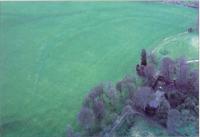
Plate 3: The enclosure surrounding the monastery of Durrow defining its sanctuary.
Joshua in the Old Testament. This biblical concept of communal refuge was embraced by early Christian establishments and manifested itself in the construction of earthen and stone inner and outer enclosures around their settlements, and the strategic placing of termon crosses. In a poem ascribed to St Columcille, founder of the monastery of Durrow, Columcille appoints Laisrenas abbot of the site and advises him to set about erecting a boundary around it ‘so that there might not be a breach therein’ and then to cut down the brave forest of Dair Magh and to make stakes and place them ‘in a comely row on every side around the monastery so that the congregation may have a protection against danger’ (plate 3). As an additional
deterrent to wouldbe plunderers, the church, in fire and brimstone manner, emphasised the great wrath that would befall a king should he violate sanctuary: ‘Maximian, the king of the Romans, fell in war through laying heavy hands on God’s churches’. That wrath was not necessarily sudden but could be protracted as in the exemplary saga of the sixth-century king Diarmait mac Cerbaill, whose royal fortunes apparently declined following his violation of the sanctuary of St Ciaran of Clonmacnoise and St Ruadan of Lorrha. The right of sanctuary was also recognised in secular law. One law tract lists seven places in which battles are prohibited and includes ‘the sanctuary of the church within, together with its termon outside’.
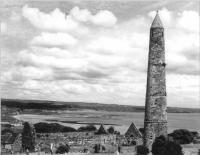
Plate 4: Round Tower, Ardmore, County Waterford. (COURTESY OF THE OFFICE OF PUBLIC WORKS)
Round towers
The advent of the round tower also emphasised the security consciousness of monastic towns and their sense of themselves as citadels. The earliest towers date from the tenth century and they continued to be built in the twelfth and early thirteenth centuries. Amongst the finest are Ardmore, County Waterford (Plate 4); St Canice’s and Grangefertagh, County Kilkenny; St Brigit’s, County Kildare; Timahoe, County Laois; Kilmacduagh, County Galway; Devenish, County Fermanagh; Roscrea and Cashel, County Tipperary; and Glendalough, County Wicklow. The Irish word c!oigteach emphasises that the primary function of the round tower was undoubtedly as a belfry but with their doorways placed several feet above ground level, it is certain that they were also used as places of refuge. That they were not very effective is testified by several references to their burning in the annals. In 949, during an attack on the monastery of Slane, County Meath, the annalists tell us that its round tower ‘full of people’, together with the portable wealth of the community, was burnt by the Norse. The very fine round tower of Grangefertagh, over 100 feet high, became the funeral pyre of Eochaidh Va Cuinn, the chief scholar of the monastery, when he was burnt to death in it during a raid on the communityin 1156.
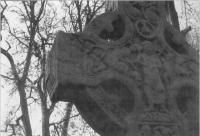
Plate 5: King David playing the harp – the high cross at Durrow.
Wealthy corporations
The recurrence of monastic conflagrations is easy to comprehend when we consider the nature and role of Irish monasteries in contemporary society. The increasing identification of substantial outer enclosures around many monasteries and gleanings from the annals and saints’ Lives suggest that large monastic establishments (such as Armagh, Birr, Clonmacnoise, Clonard, Clonfert, Durrow, Fore, GIendalough, Kells, Kildare, Kinnitty, Lismore, Roscrea and Seirkieran) were, by the eighth century, tantamount to towns supporting significant populations of clerics and laymen. The use of terms such as cathrach and civitas in reference to Clonmacnoise and Seirkieran in the saint’s Lives is further evidence of their urban nature. In the Life of St Molua of Kyle (d. allegedly 605) a miracle is related with regard to an encounter between Molua and Sedna of Seirkieran in which their respective establishments on either side of the Sliabh Bloom Mountains are alluded to as cities. Sedna, Abbot of Seirkieran, refers to his establishment as civitatem meam and to his brethren’s site as civibus meis. The best elucidation of the highly organised nature of an Irish monastery is to be found in Cogitosus’ seventh-century ‘Latin Life of St Brigit’ (concerning Kildare), and in the late ninth century ‘Tripartite Life of Patrick’ (concerning Armagh). Both described monastic settlements supporting stonemasons, carpenters, charioteers, cooks, brewers, wrights, metalworkers, blacksmiths, millers and many more tradesmen and craftsmen. Cogitosus described Kildare as a ‘vast and metropolitan city … which Brigit had marked out with a definite boundary’.
Forging the Cross with the Sword
An important factor in the secularisation of monastic life and the development of monasteries as urban centres was the christianisation of Irish kingship which gathered momentum from the eighth century and found its most potent expression in the ninth and tenth centuries with the Southern Vi Neill high kings. The idea of the Christian king was very topical in Britain and continental Europe at this time, as manifested in the Novus David aspect of Carolingian political theory. Emperor Charlemagne (742- 814) perceived himself as the new King David and considered his mission to be the establishment of the ‘City of God’ on this earth, a vision expressed several centuries earlier by St Augustine in his treatise of that name. Charlemagne’s successors, the Emperors Lothair and King Charles the Bald, were equally obsessed with the ‘David’ identity and went so far as to have themselves portrayed as King David equipped with crown and harp in religious works commissioned by them, namely the Gospels of Lothair (c. 849-851) and Count Vivian’s Bible (c. 843-851). The Anglo-Saxons in turn imitated the ecclesiastical consecration of the Carolingians and there are intimations that Irish kings followed suit. In the death notice of the Southern Vi Neill king of Tara, Aed mac Neill in 819, he is commemorated by the annalists as the ‘ordained’ king of Ireland. In addition the David motif finds its way into the iconography of ninth and tenth-century Irish highcrosses: on the south cross at Castledermot, County Kildare; the Cross of the Scriptures at Clonmacnoise, County Offaly; Muiredach’s cross at Monasterboice, County Louth; the Killamery cross, County Kilkenny; and the high cross at Durrow, County Offaly (plate 5). In each case David is depicted playing his harp. These images must surely carry the same symbolic gravity as their Carolingian and Anglo-Saxon counterparts, an affirmation of the new Christian order in which king and church were at least superficially united in purpose. The forging of the cross with the sword, the spiritual with the temporal, introduced a worldly dimension into monastic settlements, with local chiefs, provincial kings and high kings patronising sites, erecting churches, round towers, high crosses, using monasteries as repositories for their wealth and seeking burial places within their precincts. The erection of the Kinnitty cross in what is now Castlebernard Demesne, County Offaly (Plate 6), the result of the patronage of Maelsechnaill, king of Tara from 846 to 862 (probably in the aftermath of the Rathhugh royal assembly of 859) was a patently political act as it was just within the rival Eoganacht territory of Munster. Likewise Maelsechnaill’s son Flann Sinna was responsible for building the great cathedral at Clonmacnoise in 904 and a debatable inscription on the Cross of the Scriptures may attribute its erection to King Flann. There is an intriguing panel on the east face of this cross illustrating an abbot and king both grasping a staff or standard (plate 7): an uncanny parallel for this gesture can be seen on a small panel of the first metal cross of the Abbess Matilda of Essen (973- 1011) housed in the cathedral Treasury at Essen, where Matilda and her brother Otto, Duke of Bavaria and Swabia (d. 982) are likewise depicted holding a standard between them as though reaffirming the faith of the imperial house (plate 8). The figures on the Clonmacnoise panel may represent the abbot Colman and the high king Flann Sinna performing a similar symbolic act. This interdependence of church and state, expressed in the iconography of high crosses and stressed in law tracts, sagas and canons, was clearly seen as an imper-ative, and more particularly by the church. Monasteries were not subtle in their wooing of kings and especially aspiring high kings_ At the pinnacle of the church hierarchy, Armagh openly favoured an all-Ireland high kingship in order to bolster its standing as an ecclesiastical primacy. In the light of the integration of these two worlds, it is hardly surprising that the larger monasteries with particular political allegiances and their bounty of wealth, the most coveted of which would have been cattle, grain, hides, textiles, precious metals, relics, reliquaries and books, became the focus of political intrigue and rivalry, kingly attention, and envy, leading ultimately to conflict and war.
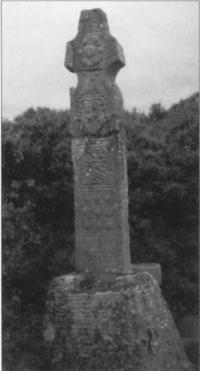
Plate 6: The Kinnitty high cross erected c.859 by Maelsechnaill, king of Tara.
Cattle and captives
The parameters of violence extended from petty robbery and the slaying of individual clerics and persons seeking sanctuary to major raids and staged battles. According to the annals, and this is probably a conservative estimate, Armagh was plundered and burned on over forty occasions between 617 and 1189. Clonmacnoise suffered equally from the time of its first recorded raid in 722. An insight into the nature of the booty seized at Clonmacnoise is provided by the annals for 1023 when we are told that Gadhra, son of Dunadhach, plundered the entire termon and carried off ‘many hundred cows’. Likewise Armagh had vast herds of cattle, two thousand of which were seized by the men of Farney and Oirghialla in the course of a joint raid in 995. Captives were also prized as we are told in the annals for the year 1060, when the Vi Chearbhaill of Eile Tuaisceart in league with their neighbours the Vi Forgga of Eile Deisceart seized prisoners at the Cross of the Scriptures. The ambitious Diarmaid mac Mael na mBo, king of Vi Chennselaig and claimant to the kingship of Leinster, ravaged several monasteries in Kildare and Carlow in 1040 and in the process carried off large numbers of prisoners from the churches of Moone, Castledermot Dunmanoge and Clonmore. Such hostages were valuable for exchanges and they were frequently used to ensure that agreements were observed. Raids were not always provoked by avarice and treachery. In times of great need, monasteries were viewed by hungry mouths as enticing storehouses of grain and cattle and naturally became targets for those seeking food and shelter. The Annals of the Four Masters tell us that in 1050 ‘much inclement weather happened in the land of Ireland, which carried away corn, milk, fruit, and fish, from the people, so that there grew up dishonesty among all, [so 1 that no protection was extended to church or fortress’.
Inter-monastery and inter-dynastic warfare
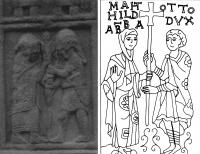
Plate 7: (left) Abbot Colman and the
high king Flann Sinna on the Cross of
the Scriptures, Clonmacnoise.
Plate 8: (right) The Abbess Matilda of
Essen and Otto, Duke of Bavaria and
Swabia reaffirm the faith of the imperial
house (from the late tenth century
first metal cross of the Abbess
Matilda, housed in the cathedral treasury,
Essen).
other, although the territorial claims of rival monastic federations (paruchiae), and divergent political allegiances must have been contributing factors. The mid-eighth century was a turbulent time for the Clonmacnoise community. In 760 the abbot of that monastery waged war on the monastery of Birr and again in 764. Clonmacnoise engaged Durrow in a major pitched battle and slew two hundred of the latter’s fighting men. The death toll in this battle was superseded by a bloody war in 817 between the monastery of Taghmon, assisted by Cathal mac Dunlainge, king of Vi Chennselaig, and the monastery of Ferns, in which four hundred were killed. In the aftermath of the battle, Cathal installed himself as the vice-abbot of Ferns. The substantial numbers of Durrow and Ferns casualties suggests that the more prestigious monasteries had large populations of the faithful to draw upon in times of conflict and perhaps even maintained modest trained armies. In these instances battlegrounds at a remove from the opposing monasteries were chosen for the contest and consequently structural damage to monastic buildings did not apparentlyoccur. However, in inter-dynastic wars, monasteries patronised by an enemy were seen as legitimate targets and as such usually endured the brunt of attack, frequently with devastating consequences for church property. In 1130, Conchobhar Mac Lochlainn, King of Oileach (Grianan Aileach, near Derry) with the assistance of the Cineal Eoghain (County Tyrone), Cineal Conaill (County Donegal) and Oirghialla (Counties Monaghan and Armagh) launched an attack on their mutual enemy – the territory of Vlaidh (within Counties Down and Antrim) and to emphasise their point razed the monastery of Drumbo, County Down to the ground ‘including round tower, and oratory, and books’. Birr suffered a similar fate in 949 when it became the stage for a battle between the powerful southern Ui Neill high kings and the Ui Failge of Leinster in which the latter were predictably defeated.
Warrior abbots
In 803 the Annals of Ulster tell us that clerics were declared exempt from military service. The inference is that prior to this date abbots and bishops alike could be prevailed upon 18 HISTORY IRELAND Autumn 1993 to support their respective over-kings on the battle-field. However, following their exemption we know that they continued to engage in inter-dynastic feuding of their own volition. The involvement of clerics in inter-dynastic warfare is well documented in the Irish annals and more particularly from the eighth to tenth centuries during the single-minded pursuit of an all-Ireland high kingship by the Southern Ui Neill. The over-riding consideration of the abbots of larger monasteries was undoubtedly to preserve and enhance the wealth, status and prestige of their foundations. To survive and thrive, it was vital to be seen to foster the ambitions of the most powerful king. The monastery of Durrow frequently took to the field in support of the Ui Neill, as in the campaign of 776 when they contributed to the defeat of Munster. Likewise Donnchadh, abbot of Kildalkey and Lergus, bishop of Kildare, found it expedient to support the Ui Neill in their battle against the Norse in 888. Perhaps the most bellicose of the eighth-century abbots was Bodbgal of Mungret, County Limerick, who took on the might of the Ui Fidgente in 752, TTo DV’X lived to tell the tale and was finally slain in yet another battle in Munster in 757. The image of the war-like cleric and the mobilisation of significant numbers of the population of monasteries for military engagements was not peculiar to early historic Ireland. At all levels of the church hierarchy across Europe, from pope downwards, the ‘defenders of the faith’ frequently sought recourse to the battlefield to air grievances, redeem pride and foster might. Conflict and violence directed at and by Irish monastic settlements was an inevitable consequence of the inter-dependence of church and state, a necessary evil in the ‘City of God’. Liz FitzPatrick is a contract archaeologist with the Urban Archaeological Survey, Office of Public Works.
Liz FitzPatrick is a contract archaeologist with the Urban ArchaeologicalSurvey, Office of Public Works.
Further reading:
A.T. Lucas, ‘The Plundering andBurning of Churches in Ireland, 7th to16th Century’, in E. Rynne (ed.), NorthMunster Studies: Essays in commemorationof Monsignor Michael Moloney(Cork 1967).
















